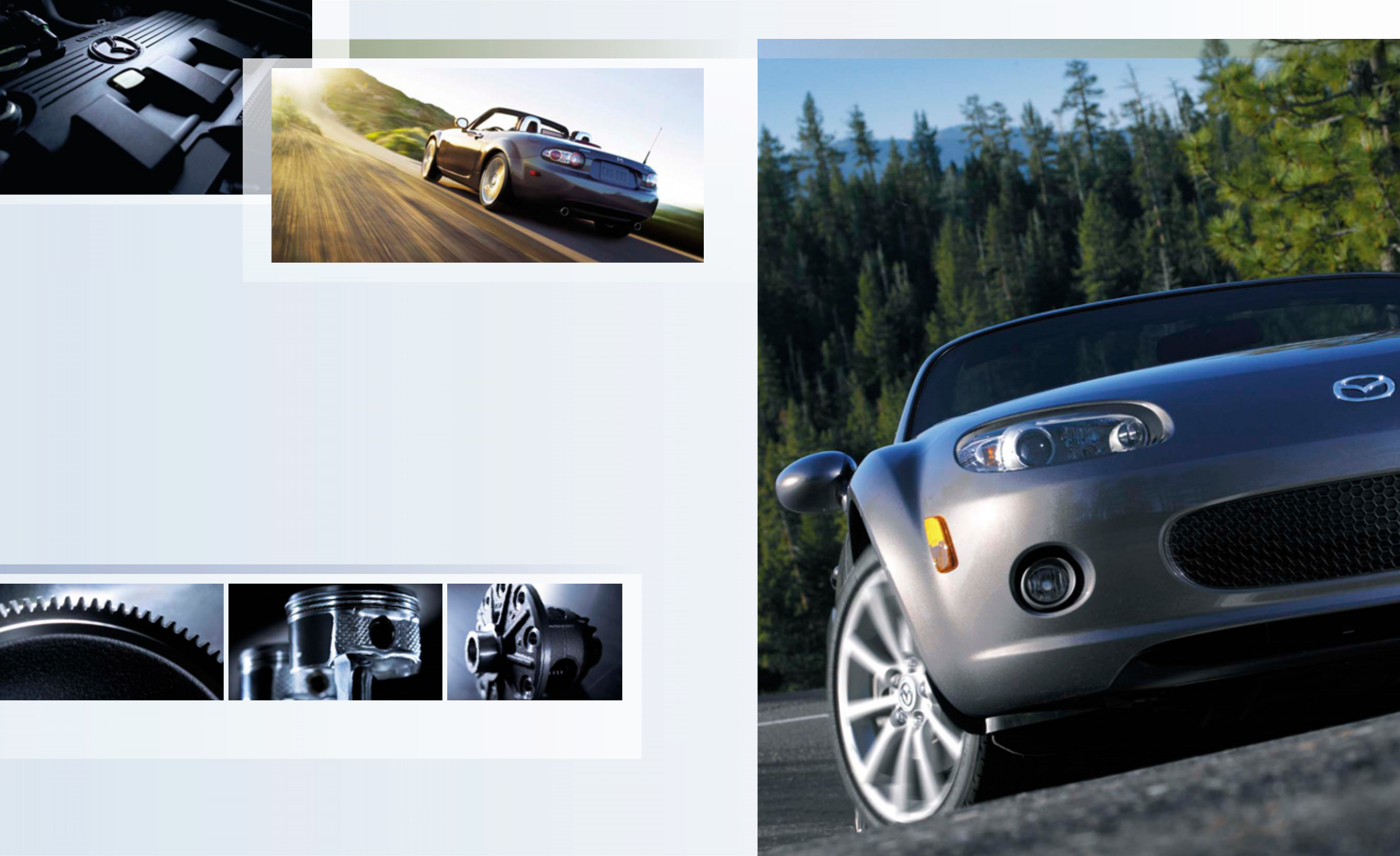
It’s all about
generating more power per pound.
A. B. C.
A. The MX-5 Miata utilizes an ultralight flywheel to enhance the engine’s free-revving performance and improve its responsiveness. B. Friction-reducing, molybdenum-coated pistons
plus a high-compression ratio help the current MX-5 Miata engine generate 17% more horsepower than the previous generation’s powerplant. C. A limited-slip differential and Dynamic
Stability Control with Traction Control System are available on select MX-5 Miata models.
* Based on a comparison of model year 2006 roadsters.
Weight is the enemy of every true sports car. So Mazda engineers implemented a radical, weight-saving “gram strategy” to make certain that every critical
component in this 3rd-generation MX-5 Miata was as light and strong as possible. Which is why everything from its powerful 166-hp engine and handsome
hood to its sleek trunk lid and rear brake calipers are all crafted from aluminum. And why its ultrarigid body structure makes such generous use of high-tension
steel. Light and strong, it helps increase torsional stiffness 47% and flex stiffness 22% compared to the previous generation MX-5 Miata. It also helps improve
virtually every aspect of the car’s dynamic performance—including power delivery, steering, handling and braking. Which is why it’s more agile and more
responsive. And in dramatic contrast to some roadsters hastily assembled from shared off-the-shelf parts, the MX-5 Miata is a true purpose-built design.
Which readily explains why it’s nearly 400 pounds lighter than some competitors.
*
And, most important of all, why the Mazda MX-5 Miata is able to forge
such a unique, intuitive feeling of oneness between car and driver.

















